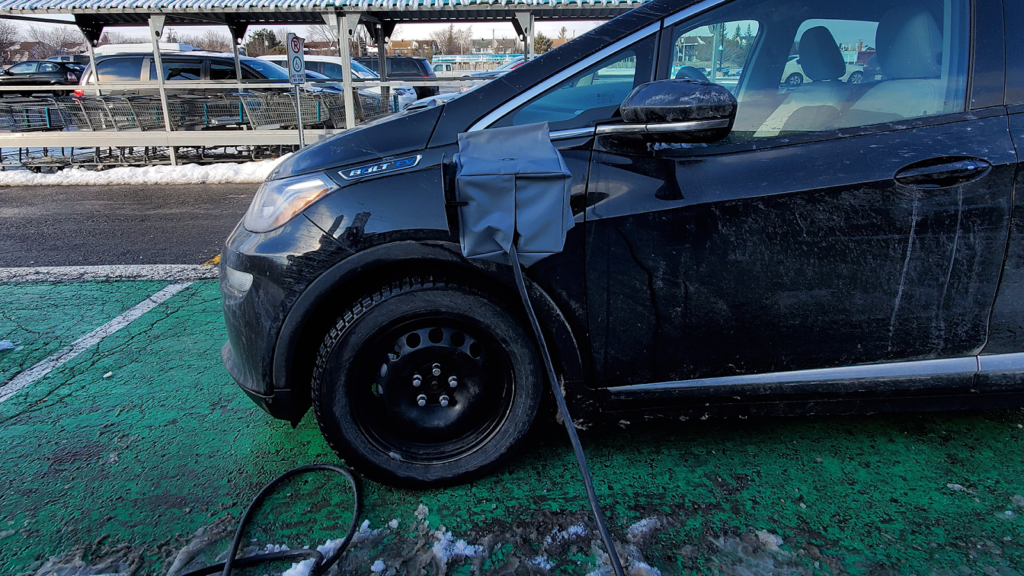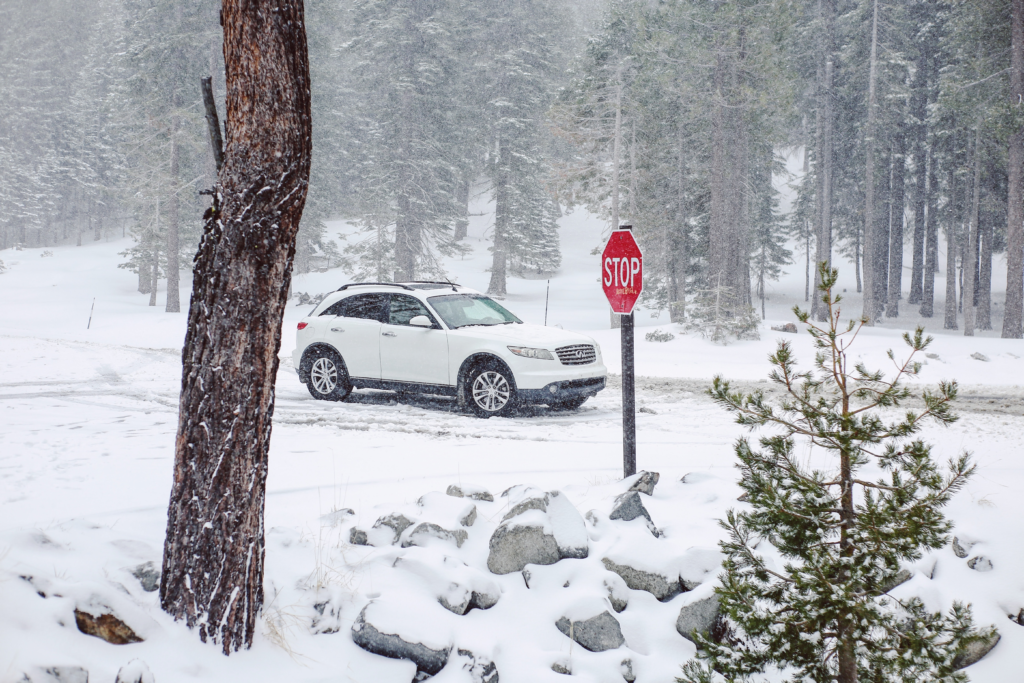Photo credit : Katja Ritvanen
Our advice for driving an electric car in winter
January 2021 | The Path to eMobility
By Julian Sintim
Getting up early to shovel snow out the driveway; the freezing cold weather preventing your car to start; the winter climate that significantly reduces your fuel economy… cars have always been at the frontlines of the difficulties winters present. For many, these experiences make it difficult to see electric cars as vehicles that are compatible with North American winters. Yet, well-designed EVs can instantly and reliably start on cold winter days.
That being said, it’s still necessary to adopt a few habits to optimize the experience of driving an electric car in winter. Fortunately, we have several EV drivers within our team. To support you in reaching your next destination, such as your favourite ski resort or ice rink, here is our advice for driving an electric car in winter!
EV Winter Advice #1

Photo credit: Ross van der Wal
Make use of heated seats and steering wheel
“I always use the heated seats and steering wheel. These consume much less electricity than the EV’s heating system, and will save more energy for the battery. Also note that EVs are generally heavier than a comparable gasoline-powered vehicle, and normally have a lower center of gravity, which also helps with winter driving.” – Benoit, Executive Advisor at ChargeHub, owner of a Kia Niro since 2020
EV Winter Advice #2

Photo credit: Karolina Grabowska
Preheat your electric car to avoid cold drives
“At home, I charge my EV outside because I don’t have a garage. I always leave my electric car plugged into my home charging station at night. Then, in the morning, 10 minutes before I leave, I start the cabin preheat function with the Kia application. By doing this, it’s the power in the house that will preheat my EV, not the vehicle’s battery. So, this is a advice is to maintain maximum range in the winter. In my case, it’s an EVduty charging station, but this is possible with all charging stations.” – Francis, COO of ChargeHub, owner of a 2016 Chevy Volt since 2016 & a 2019 Chevrolet Bolt since 2020
EV Winter Advice #3

Crédit photo: ChargeHub
Protect your electric car‘s charging port
“During winter, I make it a habit to always use my Eco-Dome in order to ensure that snow and the ice don’t accumulate in my car’s charging port while it’s plugged in.” – Johanne, Customer Service Coordinator at Chargehub, owner of a 2019 Chevrolet Volt since 2020
EV Winter Advice #4

Photo credit: Giorgio Trovato
Choose an EV with a heat pump
“For those who are still looking for an electric vehicle compatible with a lifestyle that requires you to complete long trips several times a week, I suggest you purchase an EV model equipped with a heating system that has a heat pump, rather than a resistive heater. In an EV, a heat pump generates heat by drawing outside air. It then recycles the energy to heat the passenger compartment more efficiently.
This can reduce the amount of energy normally drawn from the EV battery by a factor of 3 to 5 times. As the heat pump reduces the amount of energy needed to keep the cabin warm, you end up using less electricity. The end result: the vehicle’s winter range is much more optimal. Although heat pumps are increasingly found in the majority of new EV models, it is a characteristic of the vehicle that should be considered. ” – Simon, CEO of ChargeHub, Owner of a 2015 Nissan Leaf since 2015
EV Winter Advice #5

Photo credit: Matthew DeVris
Save money during your winter outings
“Whenever you rent a cottage for a weekend or similar accommodation for your winter outings, such as skiing, if there is a charging station on the premises, the costs previously associated with gas are now eliminated. Also, EV charging at these locations is often free, which essentially pays for your return trip.” – Jules, Accountant and Financial Controller at ChargeHub, owner of a 2019 Chevrolet Bolt since 2019
EV Winter Advice #6

Photo credit: Sabri Tuzcu
Keep your children warm
“In most EVs, you can program a specific time at which the heater will turn on. That way, your car is nice and warm for the kids. Plus, you’ll enjoy a longer range, since you don’t have to use battery power to heat the EV.” – Olivier, CTO of ChargeHub, Owner of a 2013 Nissan Leaf since 2016
We hope our advice will support you in having an excellent driving experience with your electric car, even in winter!
And if you still don’t have your EV, you are still on the right track to a simpler adoption when the time comes!
